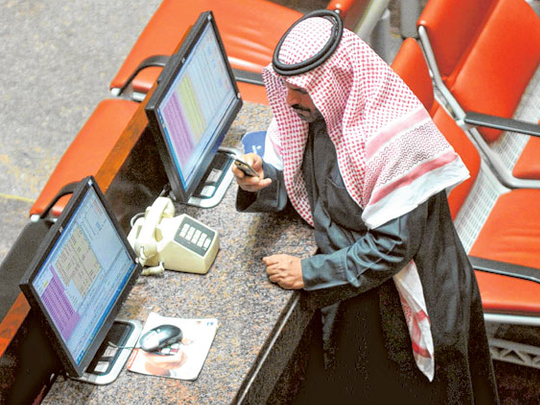
The turnaround in sentiment towards bonds since the new year has affected Gulf and Mena (Middle East and North Africa) markets, as would have been expected.
An initial sell-off at the global level has since led to a kind of stasis, until a true sense of direction can be found to follow the overwhelming bull trend derived of the global financial crisis.
Within the region, earlier this month, Bank Audi’s weekly monitor was reporting “mixed movements” in credit markets. Last week, Invest Ad’s regular note talked of activity being “lacklustre”. GIC’s research has called it “flattish”, following weeks of a “negative tinge”.
Just as the imminently due retreat of US Treasuries was foreshadowed here from a historical and theoretical perspective, so fund managers had made enough noises to imagine that it would become a reality in practical terms.
All it needed was some sign that world recovery was meaningfully in play, while still being prodded by central banks devoted to incessant monetary easing, with their utterly committed approach to retaining cheap money policy.
Lack of policy credibility may become a serious issue for the markets at some point. For now, they are engaged in assessing the validity of the so-called great rotation out of bonds and into equities, a worldwide phenomenon.
Derivative of global trends
Fixed-income instruments in the Gulf, just as in most other corners of the world, take their cue substantially from global benchmarks, which essentially means the US Treasury market. In the Islamic financial sector too, sukuk trading inevitably turns out to be something of a derivative of trends in conventional stock, both local and international.
That’s just part of the global norm, although the fact that the Gulf and Mena spaces remain classified as frontier, and aspiring emerging, means that a certain volatility may additionally apply as the fund flow to the region is marginal to mainstream shifts. The further risk-on/risk-off dimension of recent years only adds to that variability.
Equally, however — and progressively so — the Gulf especially, building its capital surpluses, has a better story to tell. It is one that attracts portfolio investments looking to switch from developed to developing markets in search of better income, complemented ideally with better economic growth prospects and even potential currency appreciation.
That triple-whammy has appeared across emerging markets, notably the Far East, although the Gulf yet remains tied, broadly speaking, to the US dollar anchor.
Last week, I asked experts in the regional economy and markets to share their thoughts at this critical juncture for the general global situation, in conjunction with the special factors that might create a positive divergence for Gulf bonds relative to elsewhere.
Safe haven perception
Saeed Hirsh, an independent economist and Middle East specialist, put the bullish case. “If yields on US treasuries rise, then undoubtedly yields on Gulf bonds will also rise,” he conceded. “However, the magnitude is unlikely to be large. Many of the region’s bonds and sukuk continue to be seen as safe havens, with very low chance of default. They will still outperform other emerging markets as enormous domestic liquidity in the Gulf means it is largely shielded from global conditions.”
Alternatively, an experienced markets practitioner working in the region, who declined to be named, said he had stopped buying bonds in December and started buying equities aggressively. He expects a gradual steepening of the yield curve in conventional bonds, stemming from the US benchmark, but admits to “some oddities” in the sukuk relationship.
Previously, there was a significant premium over Western equivalent grade credit risks for similar maturities in the GCC due to regional geo-political risk, he said. This premium “still exists but is less than it was previously” although there remained a concomitant reaction to the recent short-selling of US Treasuries.
Sukuk will move lower “some time after US T bonds”, he advised, “in lockstep” and then further “when the regional selling comes”.
That’s the inside track on how it works. It doesn’t do any harm for the market bulls to know what the bears know about these correlations and to bear them in mind.












